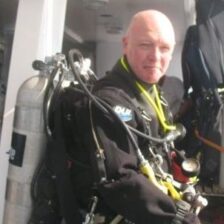His Majesty’s Submarine HMS M2
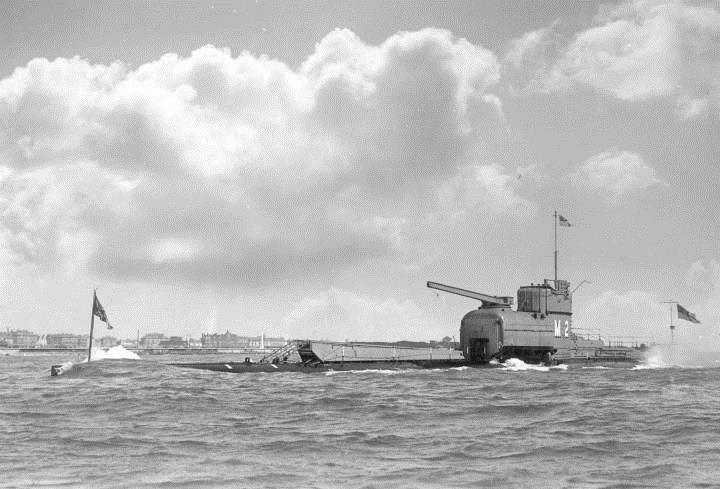
HMS M2 was one of four Monitor Class submarines ordered for the Royal Navy in the latter years of World War 1, in fact only one of those ordered would ever see service during that war, HMS M1, a submarine fitted with a single large gun, as all of the class were first intended to be. The use of such a weapon on a submarine platform seems odd today and perhaps was so even back in the day. The logic seems to have been a surface attack using a large gun was far more likely to result in the sinking of an enemy ship than an experimental torpedo, before the start of World War 1 in 1914 there had not been a recorded successful attack from a submerged weapon since the American civil war, when a charge was, literally, rammed into the side of the Yankee USS Housatonic by the Confederate submarine H L Hunley, in February of 1864 (Clive Cussler in Hicks. B: “Sea of Darkness: Unraveling the mysteries of the H. L. Hunley” ISBN-10 1938170601. Spry Publishing LLC, Mar 2015)
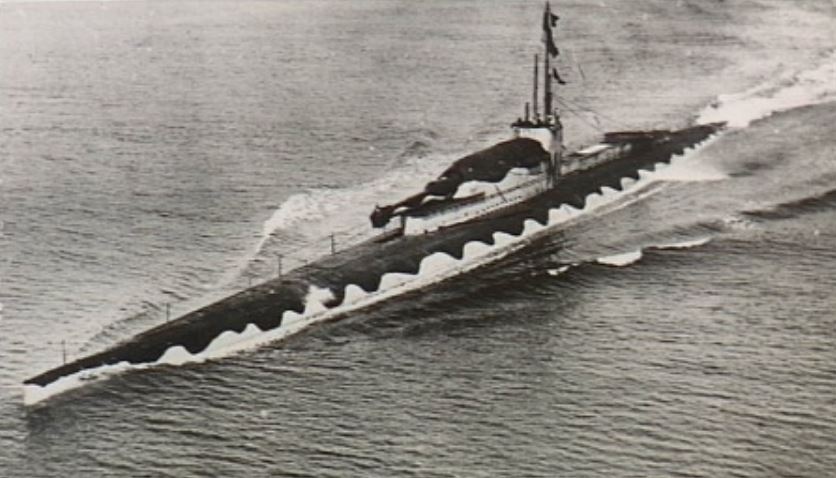
The role the M Class submarines, of which only 3 were ever completed, were intended for was as replacements for the last of the obsolete “K” Class steam powered submarines, the M Class being Diesel Electric and far more efficient than their steam predecessors. The weapon platform was operated at near surface depth, the sighting of the gun being crude to the point of “line of sight”. It seems the drill was to achieve periscope depth, line up to the target, and then rise until the gun was out of the water to fire. An absurd sequence considering if the first shot was unsuccessful, or further targets were observed, the sub had to surface to re-load. It must have come as a complete and devastating shock to the admiralty when, in September of 1914 the German U Boat U21, commanded by Kapitanleutnant Otto Hersing, sank the British Light Cruiser HMS Pathfinder off the Firth of Forth in Scotland, becoming the first submarine in history to sink a ship with a self-propelled torpedo
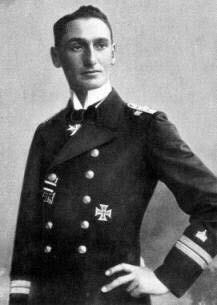
Perhaps it was the outdated concept of operation that doomed the M Class submarine as a weapon platform, perhaps it was the perfecting of the self-propelled torpedo, and the pace of progress in war, outdating the design of the M Class submarines that demanded the Admiralty stopped thinking of submarine warfare as somewhat underhand, and even ungentlemanly (if that even registers in terms of global conflict)? Then again, perhaps it was the fate of the M1, lost in a collision whilst submerged on an exercise in 1925 (only 7 years after the end of WWI and a mere 14 before the outbreak of WWII in 1939), when the Swedish merchant vessel SS Vidar struck her gun, knocking it from its hull mount and opening the hull to water ingress, flooding her and sending her to the bottom of the Channel off Plymouth with all hands lost? Whatever the reason, two of the three M Class submarines were assigned to other roles and their guns removed M2 becoming a submersible aircraft carrier, M3 becoming a minelayer and M4, still under construction was scrapped before completion
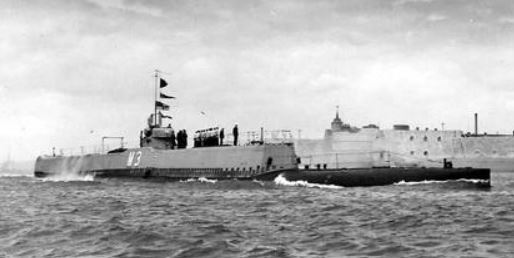
The M2 had started life in 1916, from an admiralty order for four K class submarines an order that increased to 17 (6 were built at Vickers & one, K26, a joint Vickers/Chatham build) which was later changed to an order to build to a new Diesel Electric design, and the Vickers Barrow In Furness yard converted K17, 18, 19, (K27 & 28 were cancelled Vickers orders) into “M” Class Diesel Electric Submarines, M4 (K21) was an Armstrong Whitworth build when cancelled & scrapped in build (K+M Class Submarines. Online resource: http://www.gwpda.org/naval/ks000001.htm Accessed: 20/04/2022). Of these K class submarines it would be K19 that would become the M2, originally fitted with the 12” 40 Calibre Mark IX Gun, as were all 3 of the completed M Class submarines, M2 also had four 182 torpedo tubes as standard. For those of you who love the technical specifications:
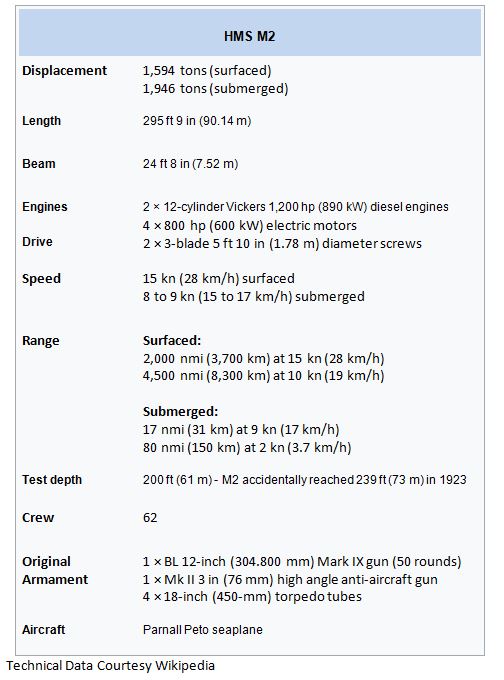
So why was M2’s gun removed and for what reason was she fitted with an aircraft hangar and a stowable aircraft? The initial role of the M Class submarines was supposed to be coastal bombardment, appear out of nowhere and shell coastal batteries defending approaches to harbours and strategic coastal cities, I imagine Gallipoli and the Dardanelles were still in the minds of some at the Admiralty at the time of contract, an enemy submarine appearing off Constantinople and shelling the city, or its defences, might have been the final straw that could have turned the campaign around completely. Anecdotal evidence from the time says the Turks were within 8 hours of fleeing to the hills, in truth there is a quote from one of the senior Turkish Generals to that effect from the day (which despite some hours of looking for it I cannot get my hands on it so you will have to take my word for it until I stumble across it again!), suffice to say there was at least some merit in the proposed concept of operations
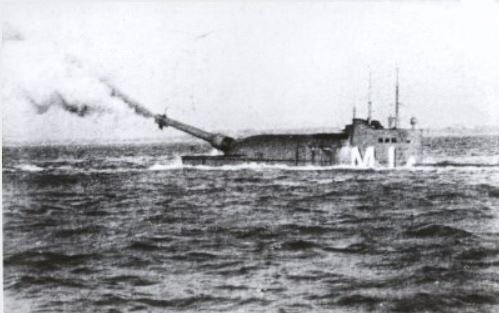
There was perhaps more merit in the role of commerce raider, a submarine challenge to the supply chains of Germany, surfacing when steamers were inbound and fully laden with war supplies, or bringing imported goods for retail and much needed food supplies for civilian and military uses. Neither role would be undertaken by the remaining M Class submarines, they were not completed in time to see service during the First World War, and would spend their time on exercise or flying the flag for Britain around the world as a show of strength and sea power. Following the loss of M1 in 1925 both M2 and M3 were taken out of service, the Admiralty no longer confident the huge guns were of any use, nor the roles realistic. M2 had her gun removed and was modified to carry an observation plane in a hangar, M3 re-designed to undertake mine laying duties, the large platforms of the M Class seemingly ideal to take such dramatic changes in purpose and function, but still able to submerge and manoeuvre in the anonymity of the sub surface world
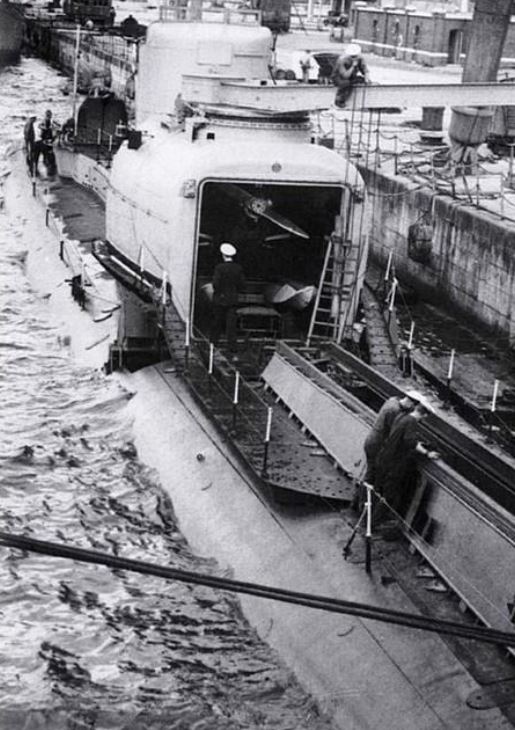
The idea of a submarine equipped with a spotter plane might seem odd, it was certainly a novelty at the time and, on her completion in 1927, it propelled M2 into the headlines across the world. The basis of the need might be a little less evidenced, however the concept of a submarine, ahead of the main battle fleet, surfacing out of the depths and launching a lead spotter plane to look for enemy shipping, or potential enemy threats to the battle fleet, clearly has its attractions. The practicalities of such a submerged operation were not insurmountable, the stowing, launching, and recovery of such an aircraft posed significant problems. The aircraft would have to have foldable wings to reduce its width, it would have to be light enough to take off in a very limited distance, and from a potentially unstable platform, after all, submarines were not the largest craft even given the size of the M Class, and they were prone to rolling from side to side in anything other than mild swells
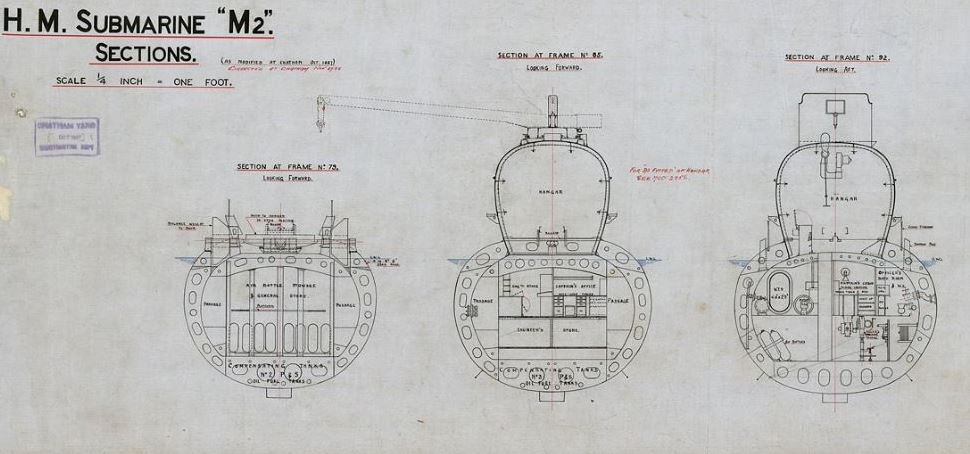
The M2 re-design, proposed by Greenwich in 1916, would take almost the entire width of the Sub’s pressure hull and have a distinctive domed appearance being slightly narrower at the hull joint. There would be a Jib above, capable of a 180’ pivot across the hull to facilitate the recovery of the aircraft back onto the vessel following a flight. The plane would require pontoons to enable it to land back on the sea and position itself for recovery. Perhaps the most challenging of the problems surrounding carrying an aircraft on the submarine would relate to its stowage and deployment. Lift of any aircraft is dependent on the surface area of the wing in relation to its weight and engine power, to fit the available space of the hangar the wings had to be stubby, and they had to fold back on the hull to narrow the planes stowed cross section, that limited the lift generated and, combined with the size and power of the engine, affected the take-off potential significantly. It would take the ingenuity of perhaps the first aircraft catapult launch system, and definitely the first submarine mounted steam launch catapult, to finally ensure the specially designed Parnall Peto bi-plane could take off from its ground breaking submarine platform

The submarine and its hull could take the modification, the Chatham design proved that, the optimal space available when all the parameters had been calculated, gave the plane its dimensions, and an aircraft manufacturer, George Parnall & Company, took on the design. The Parnall Peto began life as prototype N181, built to Air Ministry Specification 16/24 which described a “Submarine Bourne Reconnaissance Sea Plane” with general characteristics:
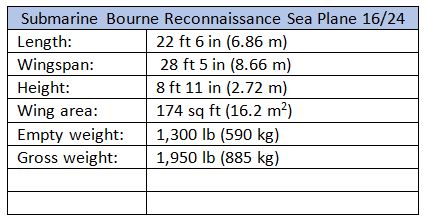
This gave George Parnall and his team another challenge as the intended crew was 2, this would allow an observer and a pilot, ideal for spotting missions, far from ideal when considering power to weight, to wing area, on a necessarily small aircraft. However, that was George Parnall’s speciality, probably why he was chosen to prototype the requirement in the first place? Parnall specialised in small aircraft and his answer, designed by Harold Bolas, the Parnall Peto, was exactly that. Harold Bolas, design engineer at Parnall’s, proposed a wood and fabric construction, strengthened with Aluminium and occasional Steel, it was originally powered by a Bristol Lucifer Engine giving out 128 Hp, with plywood floats. Graces Guide (Parnall Aircraft, Peto. Online Resource: https://www.gracesguide.co.uk/Parnall_Aircraft Accessed 26/04/2022) has it that it was generally a success, however “….modifications were put in hand and the machine was rebuilt with new wings, metal floats and a 169hp AS Mongoose engine. Tests both on the sea and in the air showed that Bolas had fully met the requirements and it was officially judged to be exceptionally good”

The specification of the Parnall Peto gave it just about enough lift to ensure it could get off the ground, or in this case the M2’s hull, fly a spotting mission with its two occupants and get back to the submarine. This wasn’t an elegant solution it was one born of necessity….compact and bijoux Mostyn….compact & Bijoux

The land trials of the Peto had proven the concept, the steam catapult provided sufficient lift to launch the aircraft, and the jib would allow recovery. In 1927 the M2 had completed fit-out at Chatham and would now take to sea to undergo a more immediate and realistic sea trial, with swells, whitecaps, repetitive submerge and surface trials to check the seaworthiness of the submarine, and the execution of the concept of a stealth platform the like of which had never been seen before

Submarines had occasionally previously carried aircraft, the German U-Boat U12 had sailed to within 30 miles of the Thames Estuary carrying a Friedrichshafen FF29 strapped to its hull. However that was just floated off when the submarine dived, and the plane had to fly back to Zeebrugge itself following its mission over the South Coast. The M2 was an entirely new weapon, one that could appear out of nowhere, in the days before Sonar, deploy its spotter plane, and then lurk at periscope depth awaiting the plane’s return, before lifting it back aboard and sinking into the anonymity of the sea with its aircraft back safe in its hangar. Conditions aboard any submarine of the time were not ideal, there were two shifts of crew in order to carry out “watches” as in any naval vessel, and as a result space was at a premium, even more-so in a submarine than on a Battleship
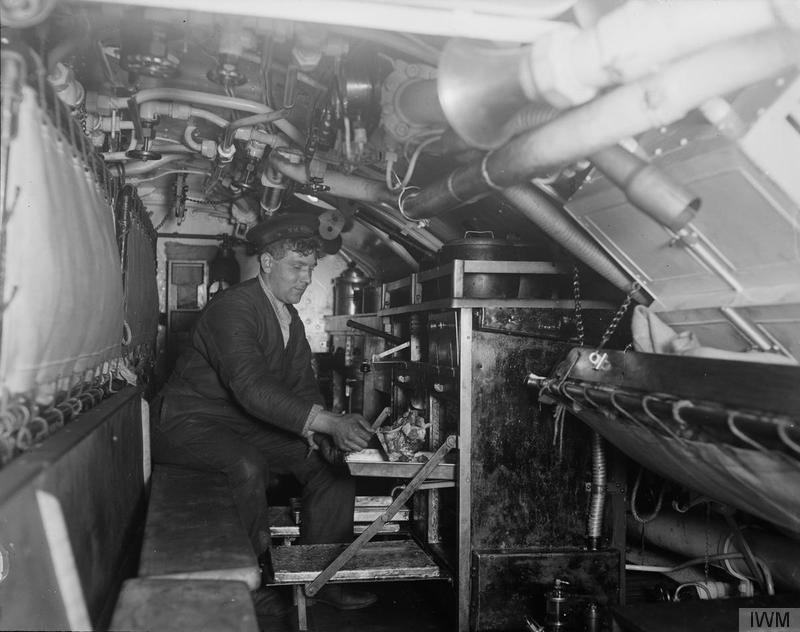
The M2 seemed to perform well in her sea trials and the aircraft hangar maintained its watertight status throughout, drills became slicker, and the times taken to surface and deploy the tiny Parnall Peto improved with each new exercise. Perhaps the M Class had finally found its place amongst the submarine fleets of the Admiralty, perhaps wars had become far less “gentlemanly” and now, of necessity, were going to be far more clandestine affairs
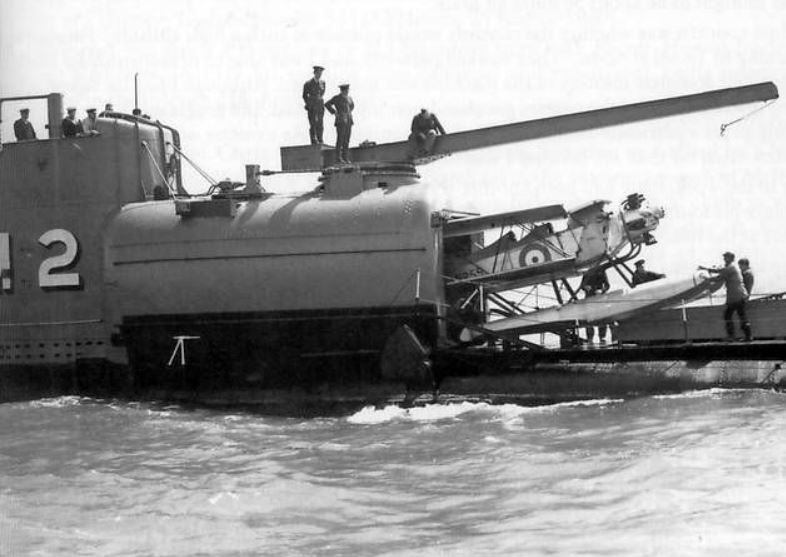
Deploying the Parnall Peto quickly, in order to maximise the element of stealth and avoid chance encounters with enemy ships, meant preparing her before the submarine was surfaced “The crew of 5 squeezed into the watertight hangar and electric heaters warmed the engine oil. On the surface, the lowered hangar door was part of the launching ramp and the Peto was pushed onto the ramp and the engine started. The aircrew climbed aboard as the wings were being unfolded and the sub turned into wind” (Subaeronautical Tales, Para 4. Online Resource: https://www.a-e-g.org.uk/subaeronautical-tales.html Accessed: 01/05/2022). To ensure readiness 24/7, there were two teams of flying crew, and to maintain and launch the aircraft there were 5 mechanics/crew aboard the M2
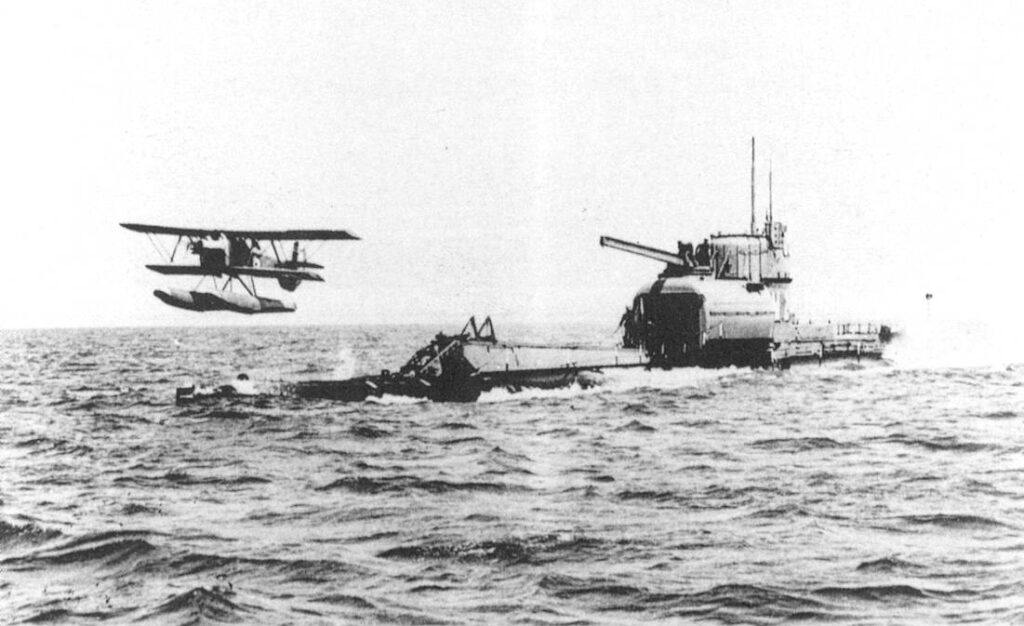
Contemporary comments have the deployments of the aircraft at around 5 minutes from surfacing. It seems the period between the 1927 conversion completion and 1932 were a continual round of exercises and trials and, on January 26th of 1932, it seemed just another exercise when M2 and her crew left Portland, in the company of another submarine, to take part in an exercise in the bay area off Chesil Beach
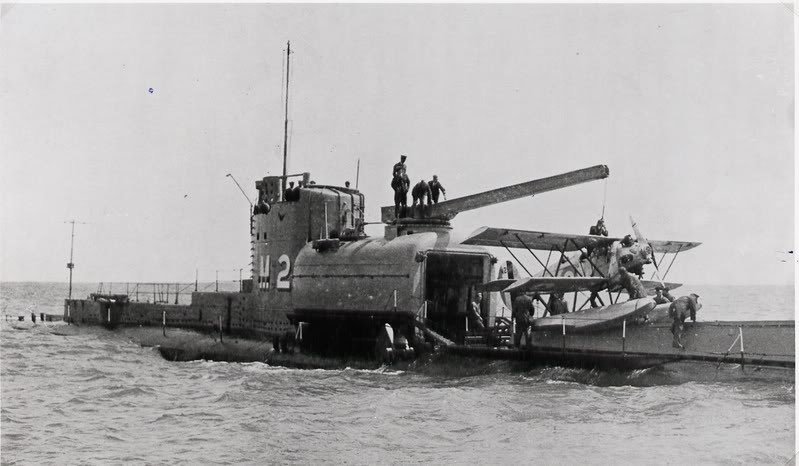
The M2 had sent a radio message at 10:11 that morning to her surface ship the Titania, to announce she would dive at 10:30 (Aviation Safety Network “ASN Wikibase, Occurrence #210792” Online Resource: https://aviation-safety.net/wikibase/210792 Accessed: 01/05/2022). By a twist of fate the M2 had been seen by a passing vessel, the coaster Tyneside, on her way in to dock at Portland: “That afternoon the coaster Tynesider put in to Portland where the captain told a man at the coaling wharf that he had seen a submarine dive stern first that morning. Later he had seen a surfaced submarine enter Portland and assumed it must have been the same boat. The Tynesider then sailed on to Gravelines and it was not until the evening that the M2 was reported overdue and a search began” (Rod Arnold “The Dugout” Issue 20 May 2020 “M Class Submarines” P19, Para 1. Online Resource: https://www.westernfrontassociation.com/media/11774/dugout-20.pdf Accessed: 01/05/2022)
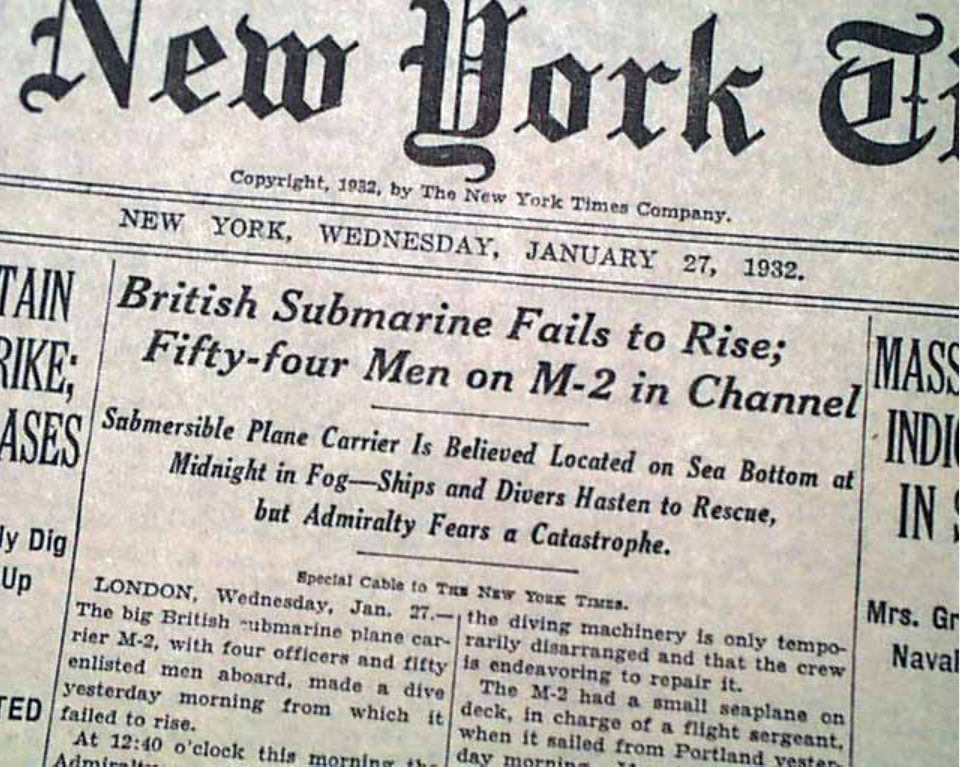
Nothing more would be seen or heard of the M2 until divers located her hull in 30m of water on the 03rd February, following extensive searches of West bay, the M2’s last known location. It seemed the M Class of submarines was ill fated, perhaps just like the K Class before them, all further M Class operations were stopped by the Admiralty and Ernest Cox, famed for the Scapa Flow German High Seas Fleet Recovery Operation, was hired to bring the M2 back to the surface to discover what had gone wrong and sent her to the bottom
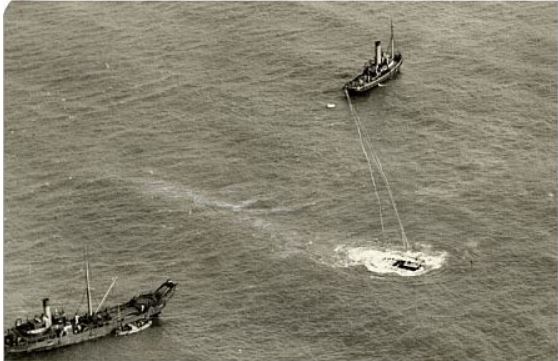
When Divers located the M2 30m deep in Portland Bay, the hangar door was found to be open, the Parnall Peto was still in its hangar, and several of her hatches were open, what had gone wrong? The two most often proposed scenarios cover the most likely causes, firstly that the hangar door was opened before the submarine had properly surfaced. The second most likely scenario is that the stern hydroplanes, the method the submarine uses to pitch its bow down and drive the hull under the water to submerge, failed in some way causing the submarine to flood the hangar and the main of the hull
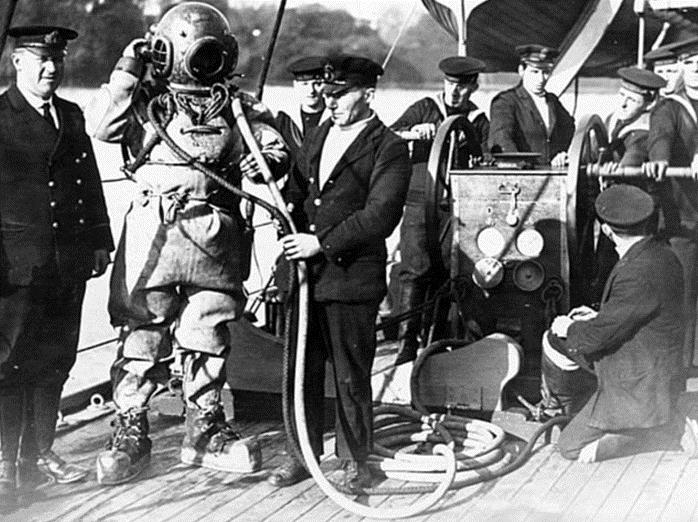
There is a third, perhaps less palatable explanation too, if the captain of the Tyneside, who presumably had not seen an M Class submarine before, had identified the stern as the bow……and you will perhaps agree, from a distance the conning tower of the M2 gives the impression the hangar is located behind it…….then the M2 was actually diving as usual, with the hangar doors not fully closed, or worse, the hangar doors failed as the M2 dived and flooded her through the hangar
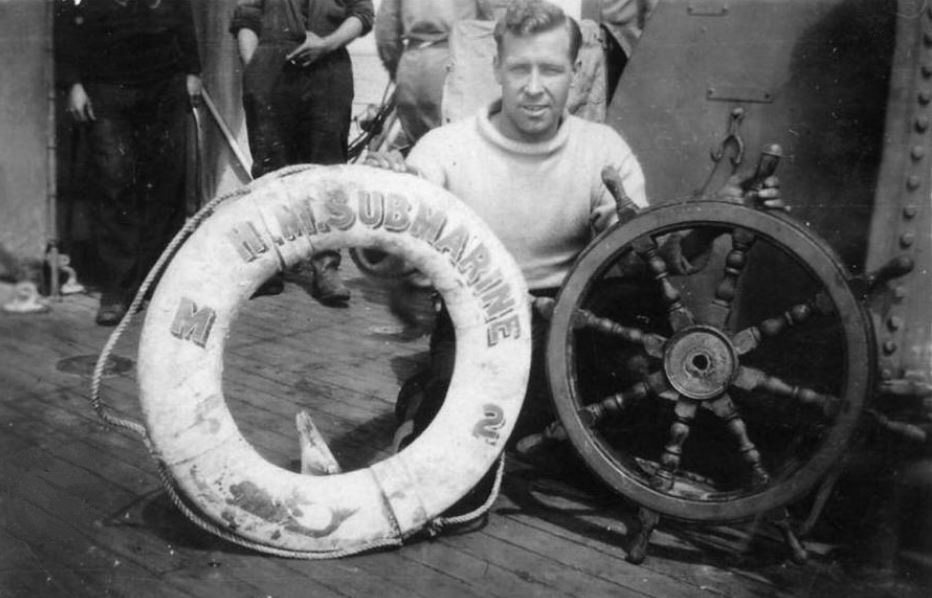
Apparently there were procedural issues from the outset, the manner in which the M2 maintained her launch state on the surface was unusual, “High pressure air tanks were used to bring the boat to the surface in an awash condition, but to conserve compressed air compressors were then started to completely clear the ballast tanks of water by blowing air into them. This could take as long as 15 minutes to complete. The normal procedure for launching the aircraft was therefore to hold the boat on the surface using the hydroplanes whilst the hangar door was opened and the aircraft launched” (Aviation Safety Network “ASN Wikibase, Occurrence #210792” Online Resource: https://aviation-safety.net/wikibase/210792 Accessed: 01/05/2022)
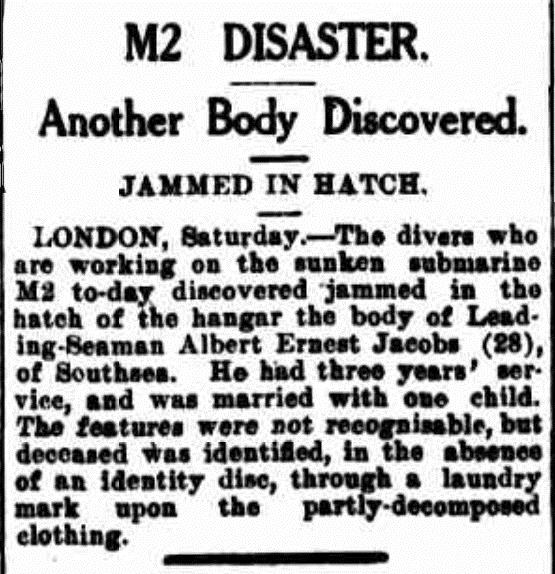
As far as I can make out the writer of the piece (apologies if I am in error with this), Dr John Smith, makes the conclusion that, if the M2 was using this method to hold surface, then a failure of the hydroplanes would have forced the stern down and dragged the submarine under, as the captain of the Tyneside said he observed, until the hangar flooded and the M2 was beyond saving. There is no doubt the sinking of the M2 could have been caused by a combination of factors, an attempt to improve deployment times, mechanical issues, or just plain human error, whatever the real reason it is unlikely we shall ever truly know exactly how she ended up on the sea bed
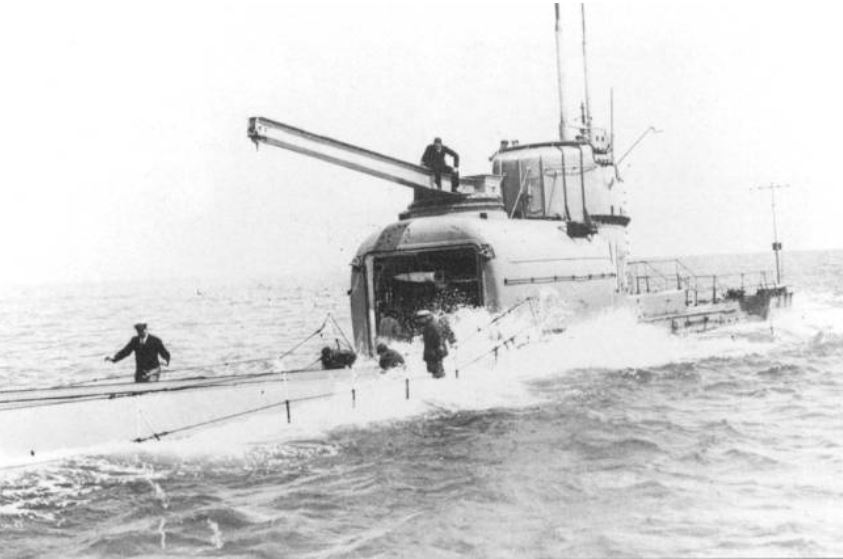
The attempts to salvage the M2 were unsuccessful, even Ernest Cox couldn’t get her to the surface, although he came very close, reaching a couple of meters from the surface on one occasion, the weather hindered every attempt and the equipment available to Cox clearly was not up to raising a flooded submarine, from 30m in a series of sets of increasingly bad weather conditions, “The process of making HMS M2 ready for lifting was dogged with a number of severe setbacks. These included bad weather and the parting of the lifting “camels” from the wreck. In fact a total five different attempts were made to raise HMS M2 and they all ended in failure. Finally, in December 1932, plans to salvage the wreck were abandoned.” (Innes McCartney “Lost Patrols: Submarine Wrecks of the English Channel No 3/21, HMS M2 – Aircraft Carrier” P82). In December of 1932 the M2 was finally allowed to rest where she sits today, in Portland Bay. Whatever the reason, the M2 was the final loss of an M Class submarine, the Admiralty could not ignore the repeated failures, and would not tolerate the continued losses, the M Class was abandoned and all remaining craft sold for scrap, including the (up-to that point), successful minelayer M3. M2 is the final, tragic resting place of 58 of her crew, a living memorial to the arms race of the inter-war years, and the ultimate sacrifice of 60 sailors in the service of their country

I dived the M2 in April of 2004 and was lucky enough to have a student with me taking some video, the quality of the video isn’t up to today’s HD standards, but it was early days for your average diver to have a video set-up, it was early days for Brad filming too, but you can see what he shot later in this piece. My Navy Log records: “M2 Portland Dorset Good descent to the hull with viz @ 5-6m and plenty of life – a great Lobster which came out to play fearlessly! The wreck is splendid with dead man’s fingers everywhere & intact throughout. The bow is odd with cut-outs in the centre. The hangar is silted but we entered for 2 – 3 m then went round the rails & then the conning tower area before ascending. The masts are still in place – remarkably. Buddy Keith Air In 240 Out 100”
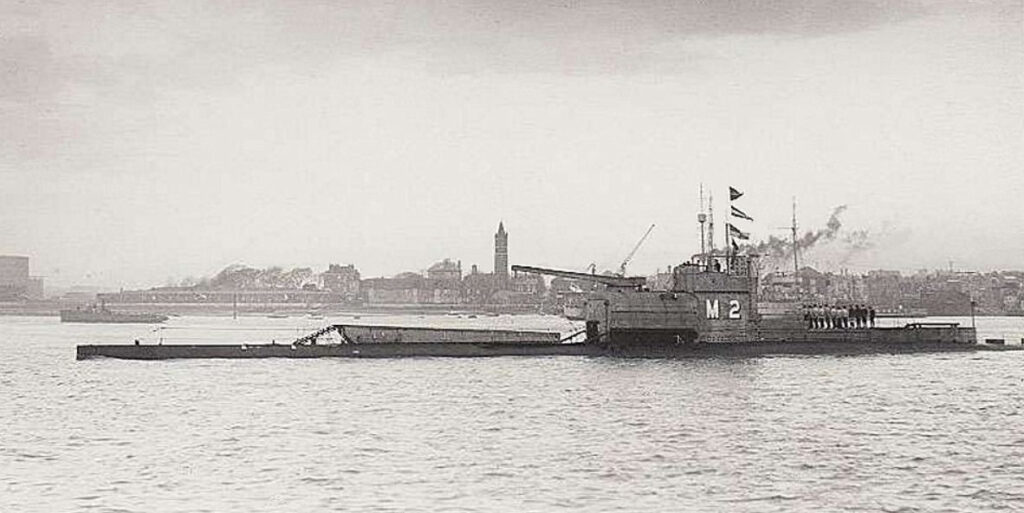
As usual, the description is brief noting the main points of the dive. Remembering the dive, I recall trying hard to work out what the launch system was, and how it would have worked, the steam piston tubes were still present but, apart from a basic understanding, the technical details were lost on me. The viz was not bad, it gave enough to see the area you were in, but not enough to get the scale of the wreck. I know I was surprised how long it took to reach the bow and circle back to the conning tower. The hangar was very silted on our dive and it would have been great to see it when cleared, perhaps there are even remnants of the Peto in all the debris blocking it? All I could think at the time was how tragic such an end would have been, I had no idea bodies had been recovered back then, believing there had been total loss. It is clear some tried to escape and, to have been caught in a hatch perhaps indicated the first to attempt to escape failed, and blocked the way for others behind them. At the time the Davis escape gear was a very new piece of kit, I wonder how many would have put faith in it, whatever the circumstances……but we will never truly know
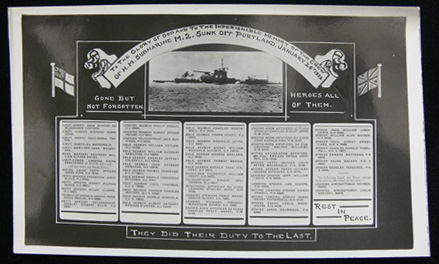


You can watch the edited version of our dive on HMS M2 courtesy of Brad, Considering the conditions on the day it’s a good introduction to the wreck
As ever, the details included here have been supported by the research of others and, for the opportunity to stand on the shoulders of giants, I am indebted to: Dr Innes McCartney, Peter Mitchell (1947-2015) and the infinite resource of the “Tinterweb”
Want to see M2 launch & recover her Parnall Peto aircraft on Movietone News?
